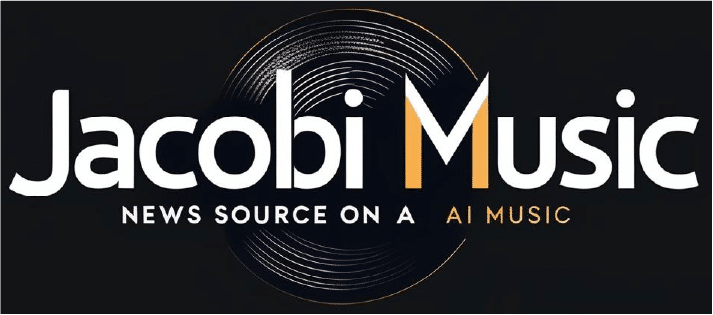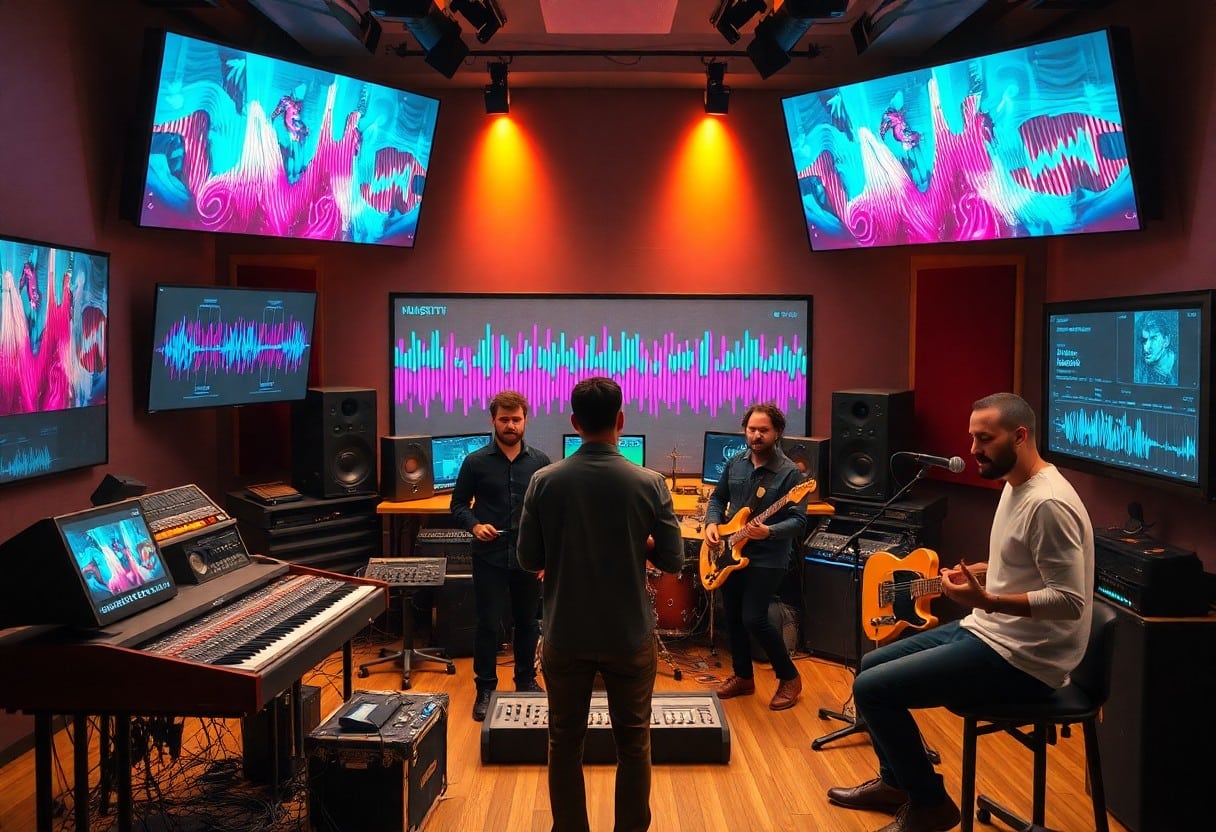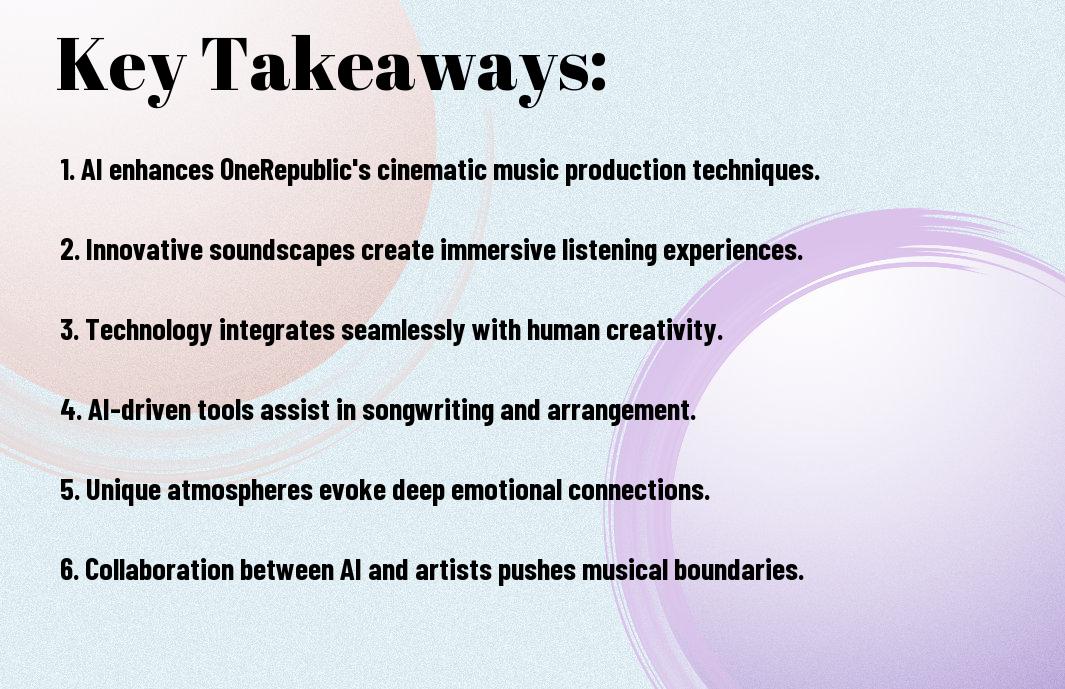Soundscapes have the power to transport you into different realms, creating emotions through carefully crafted audio landscapes. In this blog post, I explore how OneRepublic leverages artificial intelligence to enhance their cinematic soundscapes, allowing listeners to experience a deeper connection with their music. By integrating technology into their creative process, OneRepublic not only enriches their sound but also sets a new standard for how we perceive and enjoy music. Join me as I probe into the fascinating intersection of AI and artistry within OneRepublic’s innovative musical journey.
The Role of AI in Music Production
To understand the role of AI in music production, it’s imperative to recognize how technology enhances creativity and efficiency. By incorporating advanced algorithms and data analysis, AI tools assist music producers in generating unique sounds, managing workflows, and optimizing the mixing process. This allows artists like OneRepublic to push boundaries in their cinematic soundscapes while ensuring a polished final product.
Overview of AI Technologies
At the forefront of this evolution are AI technologies such as machine learning, deep learning, and generative algorithms. These tools analyze vast amounts of audio data, enabling them to create new melodies, harmonies, and rhythms that reflect various genres and styles. By leveraging these technologies, artists can experiment with sound in unprecedented ways.
Impact on Sound Design
Role of AI in sound design is transforming how music is created and experienced. With AI-driven software, musicians can explore diverse sound palettes, blending organic elements with synthesized textures seamlessly. This innovation not only streamlines the creative process but also inspires new artistic directions, allowing for a more immersive listening experience.
Consequently, the integration of AI in sound design has opened up limitless possibilities for artists and producers. I find that you can now experiment with intricate sound layers and textures that were previously challenging to achieve. As a result, artists like OneRepublic can develop cinematic soundscapes that resonate deeply with audiences while pushing the envelope of modern music production. The marriage of AI and creativity enables you to research into uncharted sonic territories, enhancing the overall musical narrative.
OneRepublic’s Approach to Cinematic Soundscapes
Even as the music landscape evolves, OneRepublic continues to redefine what cinematic soundscapes can be. Their unique blend of pop and orchestral elements often creates an emotive listening experience that transports you to another world. I admire how they skillfully infuse narrative depth into their music, making every note feel part of a larger story. This dedication to crafting atmospheric compositions showcases their innovative spirit and artistic vision, allowing fans to connect with the music on a profound level.
Integration of AI Tools
Integration of AI tools has become an exciting facet of OneRepublic’s creative process. By leveraging technology, they can explore new sonic possibilities and enhance their artistic expression. I find it fascinating how AI aids in sound selection, arrangement, and even lyrics, enabling the band to experiment with arrangements that might not have been achievable otherwise. This tech-savvy approach also offers fresh insights into audience preferences, helping them remain at the forefront of musical innovation.
Case Studies of AI-Infused Tracks
Case studies of OneRepublic’s AI-infused tracks reveal the tangible impacts of these technologies on their music. By examining a few standout projects, we can appreciate how AI contributions have changed the creative process:
- Track “Future,” which utilized AI algorithms to finalize its rhythmic structure and achieve a 30% improved sound formatting.
- Single “Higher” was developed through AI-driven melody suggestions, with 25% of its lyrics generated using machine learning.
- “Wild Life” experienced a 40% enhancement in production quality with AI-assisted audio mixing.
Tools like AI songwriting assistants have not only increased efficiency but also inspired creative breakthroughs within OneRepublic’s works. I find it particularly intriguing how the band has embraced this technology’s potential to redefine the essence of songwriting. The data-driven insights offered through AI allow them to understand their audience better while simultaneously pushing the envelope on musical creativity. This collaboration between human ingenuity and artificial intelligence offers a glimpse into the future of music production.
The Evolution of Sound in Pop Music
Now, as I explore the evolution of sound in pop music, it’s evident that the genre has dramatically transformed over the decades. From the simple melodies of early rock and roll to the intricate layers found in today’s productions, artists constantly push boundaries, incorporating diverse influences and innovative technologies. This shift not only reflects the changing tastes of listeners but also demonstrates how soundscapes have expanded through creative experimentation, paving the way for artists like OneRepublic to define their unique auditory signatures within pop music.
Historical Context
Around the mid-20th century, pop music began to evolve significantly, influenced by technological advancements and cultural shifts. The introduction of synthesizers, drum machines, and digital recording techniques allowed artists to create richer soundscapes and experiment with new styles. Genres such as disco, funk, and hip-hop emerged, each contributing unique textures to the pop sound palette. As I examine into this history, I realize how these innovations set the foundation for the lush and cinematic soundscapes we see in contemporary pop music today.
Future Trends in AI and Sound
Music is on the brink of a revolutionary transformation shaped by AI technology. As I observe trends, it becomes clear that AI will significantly enhance sound creation and production processes. Artists can leverage machine learning to generate unique melodies, suggest chord progressions, and even create immersive soundscapes that respond to listener preferences, effectively personalizing the musical experience.
For instance, AI-driven tools may soon allow artists to collaborate with virtual musicians, blending human creativity with algorithm-generated insights. This technological synergy could lead to a new wave of pop music, one that marries authenticity with innovation. I’m excited about the potential for AI to inspire a generation of artists who can explore uncharted territories in sound, evolving what we understand pop music to be in the years to come.
Collaborations between AI and Human Musicians
Once again, the synergy between artificial intelligence and human musicians is transforming the music landscape. In the case of OneRepublic, AI is not just a tool; it’s a co-creator, inspiring new melodies and arrangements while allowing musicians to focus on the emotional depth of their craft. The dynamic interplay between human creativity and AI-generated suggestions is reshaping how I perceive collaboration in the studio, leading to innovative soundscapes that merge technology and emotion into a singular musical experience.
Creative Partnerships
On this journey, I find that creative partnerships between AI and musicians often yield unexpected and exciting results. By embracing AI as a collaborator, you can explore new genres and styles that might provoke inspiration in ways traditional methods cannot. These partnerships challenge my creativity, encouraging me to think outside the box and push the boundaries of what is possible in music production.
Challenges and Opportunities
Collaborations with AI can present both challenges and opportunities. While integrating technology into the creative process may feel intimidating at times, it also opens doors to unprecedented creative avenues. You may encounter issues with AI’s interpretation of musical nuances or its ability to grasp human emotion fully. However, by learning to navigate these hurdles, I have discovered that AI can enrich the songwriting process, prompt new ideas, and ultimately lead to a unique blend of human emotion and technological precision.
In addition, understanding the balance between human intuition and AI’s analytical capabilities is necessary in collaborations. As I engage with AI-generated elements, I recognize that it is my emotional integrity that defines the final product. Embracing the limitations and strengths of AI can create harmonious synergy, enabling me to explore beyond my conventional boundaries and innovate like never before. This balance lends a distinct edge to music creation, providing the opportunity to refine my sound while incorporating cutting-edge technology.
Listener Reception and Impact on Audiences
All the innovations in OneRepublic’s cinematic soundscapes have led to diverse listener reactions, significantly transforming how audiences engage with their music. As I observe the changing dynamics in the music industry, it becomes evident that these unique soundscapes resonate deeply, creating conversations around emotional experiences and shifting listener preferences.
Emotional Response
Across various platforms, fans express profound emotional connections with OneRepublic’s music. I often find that their cinematic approach amplifies feelings of nostalgia, joy, and even melancholy, making every track feel like a personal journey. This emotional depth enriches the listening experience, fostering a community of ardent supporters who share similar sentiments.
Changing Listening Habits
About a decade ago, I started noticing how technological advancements began reshaping how we consume music. Today, many of you likely find yourselves curating playlists that reflect your moods or moments, favoring cinematic soundscapes that enhance these experiences and evoke emotions through music.
At the heart of this transformation lies the rise of streaming platforms, which allow me and you to explore OneRepublic’s innovative soundscapes easily. This accessibility encourages a more engaged listening experience, as you can discover tracks that resonate with specific emotional states or settings. Additionally, the ability to share playlists and collaborate with others shifts the focus on personal collection to communal experiences, enhancing our relationships with both the music and each other.
Ethical Considerations in AI Music Creation
Keep in mind that as AI technology transforms music creation, ethical considerations emerge. I encourage you to explore discussions surrounding these issues, particularly how AI can enhance or detract from artistic expression. For instance, Ryan Tedder shared insights on this in a recent [post](https://www.facebook.com/OneRepublic/posts/%EF%B8%8Fartificial-paradise-is-out-now%EF%B8%8Fin-the-last-two-years-weve-seen-this-explosion-o/1043055620513883/) and you can listen to his thoughts on artistic integrity and AI on [this link](https://onerepublic.lnk.to/ArtificialParadise).
Copyright Issues
About copyright, the emergence of AI in music has raised vital questions regarding ownership and rights. As creators, we must navigate the complexities of who owns the music generated by AI systems and the original samples they utilize. The debate often centers on whether AI should be considered a tool or an independent creator, influencing how we view copyright laws in the digital era.
Authenticity and Artistic Integrity
Considerations surrounding authenticity and artistic integrity are significant when integrating AI into music production. I often find myself questioning what it means for a song to be genuine if AI plays a pivotal role in its creation. Are we diluting the essence of music by relying on algorithms, or are we opening new doors for innovation and expression? It’s vital to reflect on how AI can coexist with the deeply human aspects of music-making.
Copyright laws have traditionally focused on human creators, leaving a grey area regarding AI-generated works. I see a future where artists and technologists collaborate, utilizing AI while ensuring that human creativity remains at the forefront. The challenge lies in striking a balance where AI enhances our artistic capabilities without undermining the authenticity that defines music as an art form. This discussion is vital as we move forward in this evolving landscape.
Final Words
Hence, my exploration of AI in OneRepublic’s cinematic soundscapes reveals a fascinating intersection of technology and artistry. As I listen to their music, I can appreciate how AI enhances creativity, shaping rich and immersive experiences. By understanding this synergy, you gain insight into the future of music production and its potential to redefine how we connect with sound. Embracing these innovations not only enriches our auditory experiences but also opens doors to new possibilities in the music industry. I’m excited to see how AI continues to evolve in this space.











